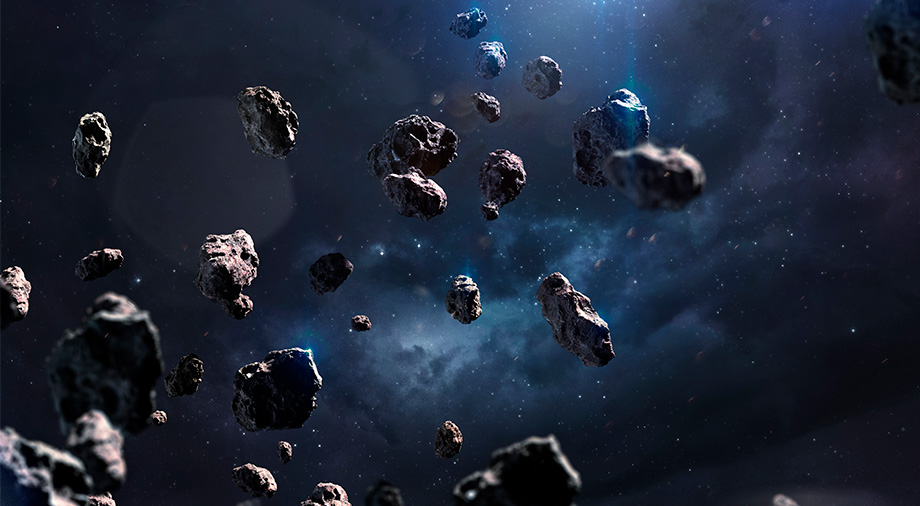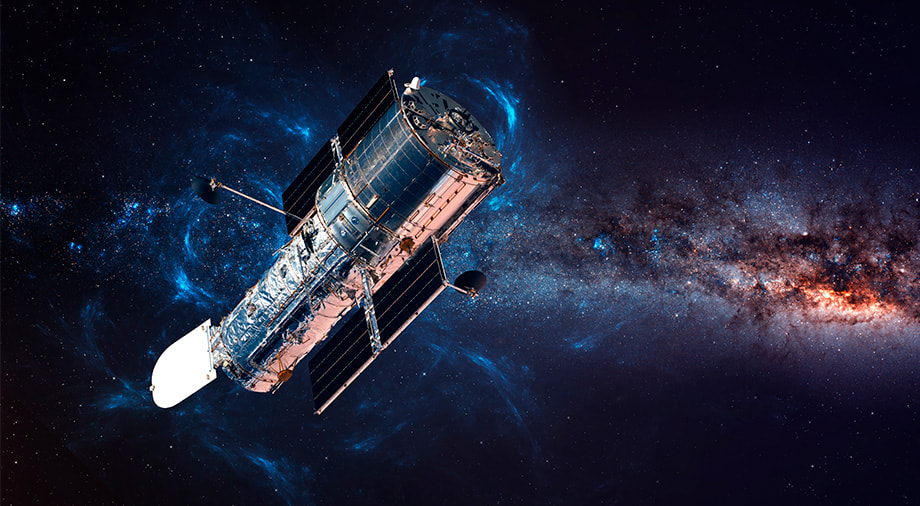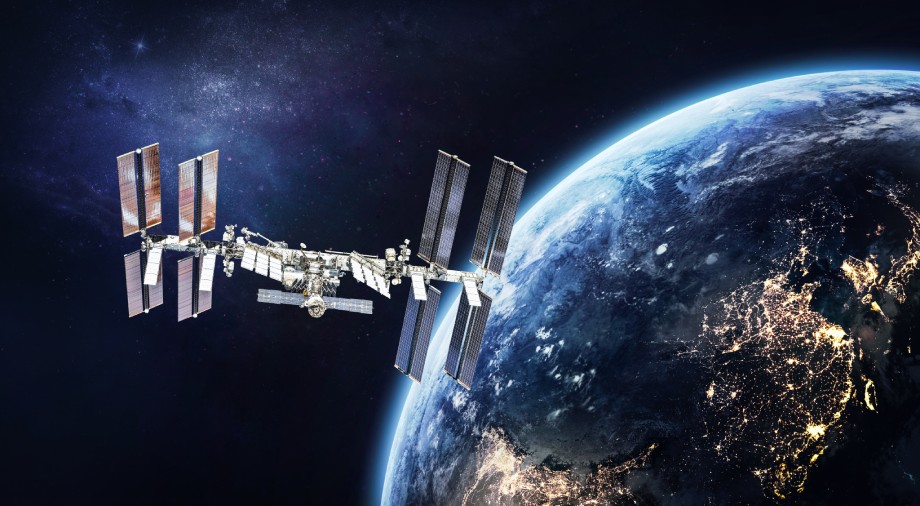In 2015, the United States became the first country in history to allow its companies to commercially mine minerals from asteroids, the Moon, and other celestial bodies. A similar law was soon passed in Luxembourg and then in the UAE, Japan, and some other countries. At the same time, a number of startups have appeared on the NewSpace market, declaring the beginning of the industrial development of asteroids as the main goal of their activities.
But how realistic are these plans? What valuable resources can we find in space, and can the mining of minerals on other celestial bodies really be commercially viable?
In this article from Max Polykov Space, we dive deep into these questions.
Material resources of the solar system
First, let’s talk about what can be found in space. What can the Solar System offer?
At present, all potentially useful space resources can be divided into two main categories – tangible and intangible. In turn, the first category can also be divided into two groups. The first will include resources that are vital to creating permanent settlements on other celestial bodies and maintaining them – the main ones, of course, are oxygen and hydrogen. They can provide space settlers with water, air, and the ingredients needed to create rocket fuel.
The most accessible source of these elements is water ice. On Mars, it is present in the surface layer in most parts of the planet, but on the Moon, water ice deposits can be found at the bottom of the never-illuminated polar craters. For this reason, the lunar poles are the main goal for many short-range research missions that will be implemented in the current decade (“Moon-25”, VIPER, “Chang’e 6”, etc.). However, if necessary, oxygen and hydrogen can be obtained from other sources. For example, the lunar regolith contains a fairly large amount of oxygen in the “bound” state (in the form of oxides). Experiments conducted by scientists have shown that it can be released by electrochemical reactions.
The second group includes resources, the extraction of which may be of interest in terms of their further delivery to Earth for commercial sale. These are, first of all, precious metals and rare earth elements. Some of the largest metal asteroids contain more rare metals than the earth’s entire crust.
In space, you can also find elements that are almost non-existent on our planet. The main one is helium-3 – an isotope, which some scientists call a kind of “Mecca” of thermonuclear energy. Theoretical calculations show that a thermonuclear reaction using one ton of helium-3 releases energy equivalent to approximately 15 million tons of oil.
The closest source to the Earth of this extremely valuable element is the Moon. Helium-3 is contained in solar wind, and therefore gradually accumulates on the surface of the satellite. According to various estimates, the Moon contains anywhere from several hundred thousand to several million tons of this isotope.
Intangible resources of the solar system
In addition to various minerals and rare isotopes, space is able to offer us another very valuable resource. In this case, these are orbital positions, or rather, the most profitable orbits for satellites and structures.
Of all the orbits in operation today, the most important for mankind, of course, is geostationary (GEO). It is actively used to accommodate communications satellites, weather satellites, and Earth remote sensing devices. At the same time, this resource is far from limitless. Satellites that use similar or close frequency bands must be at a considerable distance from each other – otherwise their signals may overlap. In some cases, the distance between them should be at least 10-15 degrees, which allows no more than 24-36 spacecraft of the same frequency range to be set into GEO.
According to international norms, each nation on Earth has its own GEO area. Countries can both use this area independently or sell and rent. Many countries use their orbital resource as a source of budget replenishment.
But we can assume that some other Earth orbits may also be subject to competition between different nations and private companies. These are the most profitable orbital echelons that can be used to host satellite mega-constellations designed to provide access to the global Internet. At the same time, unlike GEO, where the International Telecommunication Union is responsible for the allocation of its resources, there is no single controlling authority for these orbits – each country decides this issue independently. For example, in the United States, the agency responsible is the Federal Aviation Administration (FAA).
We are already seeing the first signs of the struggle for this resource among private companies. While SpaceX seeks to take the most lucrative orbits as quickly as possible, rapidly deploying groups of Starlink satellites, Blue Origin is trying to thwart these plans, including by filing formal complaints to the FAA.
Some areas on the surface of celestial bodies can also be considered an important resource. For example, on the Moon, there are so-called “peaks of eternal light” – areas of shafts and some central peaks of the largest polar craters, which remain illuminated throughout most of the year. The proximity to water ice deposits makes them an ideal location for solar power plants that can be used to power lunar bases. Images taken by automatic stations have already allowed scientists to identify a number of similar “peaks” at the north and south poles of our planet’s satellite.
Prospects for industrial space mining
Media outlets often run fantastic headlines about the truly “cosmic” value of minerals hidden inside of various celestial bodies. For example, in the case of the metal asteroid Psyche, there is an estimate of 10 quintillion dollars. It would seem that such dizzying numbers would give any project intended to extract minerals from it instant success projects to extract minerals from it. However, it’s always easier to say than do.
Even if all legal aspects were set aside, space mining is quite a difficult task from a technological point of view. A company or nation that decides to engage in such activities will have to find answers to many very, very difficult questions.
The first is to ensure the reliable extraction of minerals. Yes, it is assumed that on some metal asteroids it is enough to scratch the surface to find gold. But even so, engineers still need to figure out how to safely collect and store this substance. After all, due to the very low force of gravity on asteroids, a very small effort is enough for the extracted material to fly into outer space forever. The same, by the way, applies to spacecraft.
Next, there’s the question of the human factor. Many science fiction books and movies feature “space miners” – people in spacesuits engaged in the extraction of minerals in space. But it is already clear that such pictures are unlikely to ever become a reality. Human participation increases the cost of space missions by an order of magnitude. Therefore, the mass use of manual labor in space, as shown in movies, is simply unrealistic. The ideal option is full automation of the entire process of mining and delivery. But for this, designers will need to create completely autonomous mining stations which will be able to develop, extract ore, and repair failed mechanisms. There is no need to explain the complexity of such a task.
Then, it is necessary to solve the question of processing – whether to send ore to Earth or to organize its processing on the spot. The first option is simpler but significantly increases transportation costs. The second allows you to save on delivery but requires the use of additional expensive equipment that must be delivered to the place of extraction.
Finally, you need to figure out how to organize the mass delivery of collected materials to Earth. Again, this is not easy. Modern spacecraft can return several tons of cargo to Earth. In the case of minerals, in order to make a business commercially viable, it must be millions, or rather billions, of tons that must be passed through the Earth’s atmosphere intact and safely planted at a given point.
So even despite the extremely simplified description, it is easy to understand how complex the process of mining in space is from a technological point of view. It requires the use of technologies, many of which either do not yet exist or are in their infancy, not to mention significant capital investment.
But, let’s say a company solves all these problems and establishes mass delivery of ore to Earth. Will this make its leadership trillionaires? Not quite. The fact is that the high cost of many materials is determined by their rarity. An example is aluminum, which was more expensive than gold in the 19th century. After the advent of affordable mining technology, the cost of the metal instantly fell. Another historical example is the consequences of the European discovery of America, after which Europe began to receive a lot of gold and silver, which also led to a significant drop in prices for these metals. That’s why loud headlines about the incredible value of an asteroid are really pointless. After all, if we somehow deliver all the metals to Earth, it will lead to an instant collapse in prices.
Thus, there is an interesting paradox. On the one hand, to be profitable, the mining of minerals in space must be massive. On the other hand, overly massive deliveries will lead to a sharp drop in prices, which will, in turn, raise questions about the profitability of the business. In addition, we should not forget about alternatives that may be more cost-effective. These include the search for new deposits on Earth and improving the technology of extraction and reprocessing.
Of course, all of the above does not apply to resources that can only be found in space, such as the aforementioned helium-3. In this case, due to the lack of terrestrial counterparts, it is not threatened by devaluation. However, there are also nuances. Helium-3 has value only in the context of the development of thermonuclear energy. And this industry is still in its infancy, and at the moment, it is difficult to predict when it will be able to move from the stage of experimental installations to the beginning of real commercial use.
Local use of space minerals
Although a careful study of the prospects for commercial space mining with their delivery to Earth does not look as rosy as commonly believed, they have another application. Resources of other celestial bodies can be used for “local” production – the construction of fuel stations, spacecraft, and power plants.
And this is quite logical. After all, even despite the reduction of launch rates, the delivery of payloads into space is still very, very expensive. The cost of delivering one kilogram of payload to the Moon is now measured in five, or rather even, six-digit numbers. And the creation of a more or less large settlement or base will require the delivery of a mass of building materials, which can ruin even the richest country.
Fortunately, modern technology can offer us a way out – 3D printing. Various space agencies and companies are already studying the use of this technology for extraterrestrial settlements, with optimistic preliminary conclusions. Thus, a recent study by Azimut Space and ESA showed that with the help of a 3D printer it is possible to make monolithic bricks from lunar regolith. In this case, they can be useful not only for the construction of buildings but also to solve the problem of heat conservation. The results of experiments suggest that regolith bricks are able to store energy, which can then be used for indoor heating.
Moreover, the capabilities of 3D printers are not limited to the manufacture of basic parts. They can also be used to create other components of space settlements – such as solar panels, protective screens, or load-bearing structures. So in the long run, 3D printing will be able to completely revolutionize the human development of other habitats in the solar system. Instead of launching bulky compartments and heavy equipment on the Moon, it will be enough to deliver a few printers and build everything you need on site.
Of course, this does not mean that the described process will be an easy ride. It is necessary to create a 3D printer that can work in open space, solve the problem of its energy supply, and organize the extraction and transportation of “building materials”. But in any case, these operations will be simpler and cheaper than the mass extraction of minerals with their delivery to Earth. Of course, in order to put another flag on the moon, humanity may not need to arrange space production. But if it really wants to become a multiplanetary species and spread throughout the solar system, it will have to learn how to use its resources.





